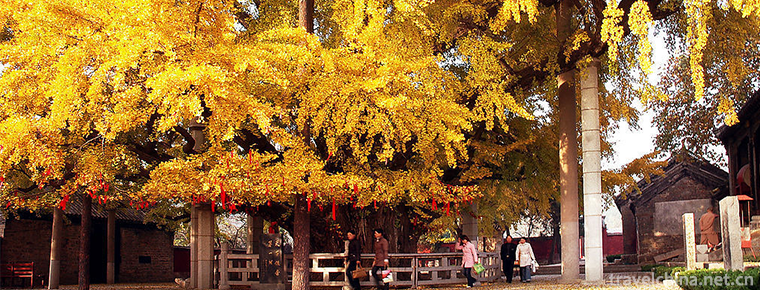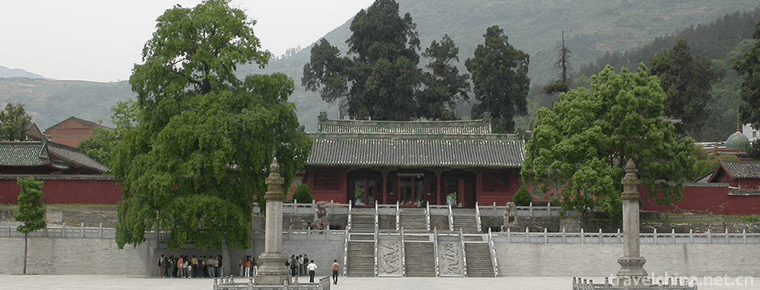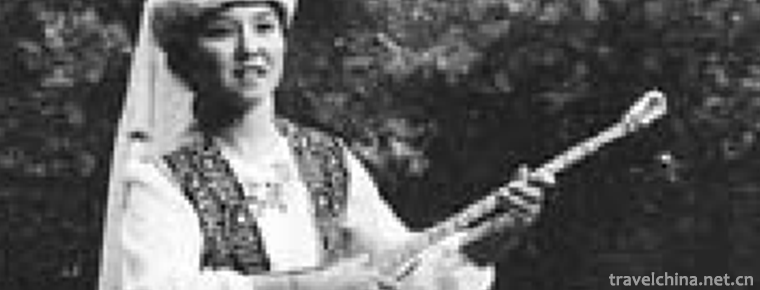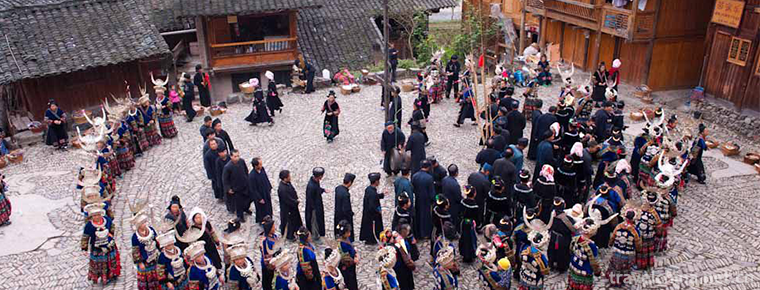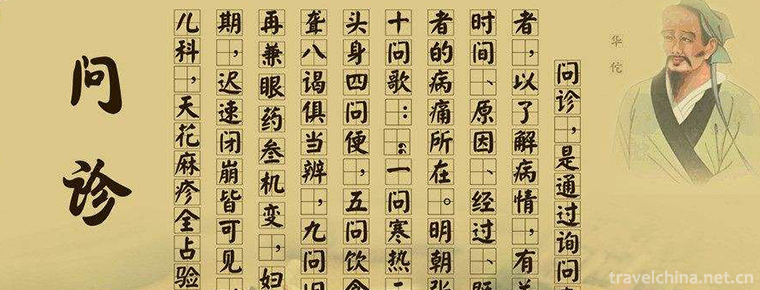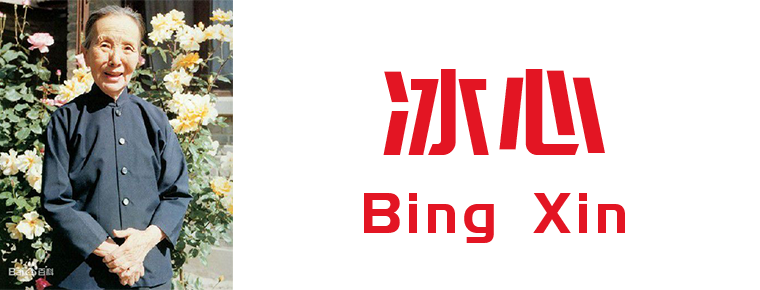Xinhua Folk Song
Xinhua Folk Song
Xinhua Folk Song is a kind of traditional folk song mainly spread in Xinhua County, Loudi City, Hunan Province. Xinhua folk song has a wide range of contents, old style, unique style, simple rhyme, changeable structure, distinct musical features, rich and diverse forms of expression, unique sentence length, more slang dialect linings, strong rap and singing flavor. Folk songs exist in the folk by oral creation and singing. Their tunes, rhythm, structure and sentence patterns are very free, and their tones are in line with the new dialect. It has formed a unique traditional folk culture and art. In 2006, Xinhua folk songs were listed in the first batch of intangible cultural heritage list of Hunan Province. In June 2008, Xinhua folk songs were successfully declared as the second batch of national intangible cultural heritage list.
Main features
1. The characteristics of primitiveness and simplicity.
Xinhua folk songs, no matter long or short, extract material from real life, extract the prototype of life, and construct poetic plots and stories.
2. Rich diversity.
Xinhua folk songs can be roughly divided into the following six categories: (1) labor songs. Including field songs, hunting songs, firewood songs, fishing songs, tea songs, logging songs, beach songs, tamping songs, chants and so on. The number of Tiange is the largest, and there are folk songs in a series of labor processes. (2) Life song. (3) Ritual song. (4) Current political songs. (5) Love songs. (6) Legendary songs of history. In the form of expression and the characteristics of the line, in addition to flat tune (including high tune), there are many singing styles and forms such as flower tune, ballistic tune, Baltic tune, rolling board tune and Gong and drum folk songs. No matter what kind of folk song, its starting tone is higher than that of Hakka folk song in southern Hunan, Pange in Western Hunan and Jingchu folk song in Dongting Lake area. Often, it is a person who starts with others, and the song is carried by the mountains and rivers. In terms of sentence structure, there are four, six, eight and long sentences, seven, five and long and short, which are interesting to sing.
3. Literary and artistic characteristics.
Although Xinhua folk song is a folk singer's oral creation, there is no excessive processing of sculpture, but the author skillfully uses the poetry of Fu, Bi, Xing, exaggeration and other artistic expression techniques. Such as: "Small vegetable garden partition wall, towel gourd and balsam pear planted on both sides. Lang planted bitter gourd and missed his sister planted luffa and thought about him (comparing things with others). Another example was: "Chestnut blossoms a thread, last year I missed you till this year, last year I missed you still too young, this year I missed you planting fields, and delayed half a year of Yangchun" (rising with things). Another example was: "Last year I had a cup of tea with my brother, fragrance till August 8, this year, I don't believe you are invited. Look in the room, there is a jasmine flower at the bedside. Send Lang to the stone cave, hand board holding water for Lang to drink, my Lang drank hand board water, dry three years without thirst (exaggeration). The application of these techniques makes Xinhua folk songs reach a high literary and artistic realm.
historical origin
According to expert textual research, Xinhua folk songs originated in the pre-Qin Dynasty before the third century BC, flourished in the 7th to 13th century (Tang and Song Dynasties), and prevailed in the 14th to 19th century (Ming and Qing Dynasties). Xinhua is the central area of Dongman in ancient Meishan, where Miao and Yao inhabited before the 10th century (before Song Dynasty). During the development of Meishan in the Northern Song Dynasty from the 10th to 13th centuries, the Han nationality moved in continuously, and the multi-ethnic cultures of Miao, Yao and Han gradually merged. In addition to hard work, festivals, weddings and funerals, the ancestors of Meishan often expressed their feelings with folk songs, and gradually formed a unique Meishan cultural masterpiece - Xinhua folk songs.
Expressive Content
Xinhua folk songs have a wide range of contents and varieties. There are labor songs, political songs, ritual songs, folk songs, love songs of pottery, nursery songs, etc. Labor songs include hunting songs, woodcutting songs, fishing songs, field songs, mountain songs, tea songs and various labor chants.
Custom songs, such as Zishui Beach Song, are more than 600 lines long. They vividly depict Zishui Beach's multi-water danger, coastal landscape geography, local products, customs and human feelings, and the life of boat workers. Customary songs such as Nao Dong Fang, Da Si Men and Suggesting Gambling Song are lively and humorous. Some folk songs also reflect the suffering of the working people, such as "foster daughter Mo Shangxi Mine" and "Zijiang Eighteen Beaches". Current political songs include "Curse Song", "Ode" and so on.
Among the folk songs, the most popular one is the love song known as "Tao Love Song". This kind of song, from men and women acquaintance, first love, acacia, engagement to marriage and extramarital affairs, has a rich and colorful performance, reflecting young men and women's curse against feudal ethics and their yearning for and pursuit of free love. In addition, there are Dong Shi Song, Master Song and lively Children's Song which show history and nationality.
Expressive techniques
The artistic expression of Xinhua folk songs is very rich. Like the Book of Songs, almost every technique is a comprehensive application of Fu, Bi and Xing. Compared with the Book of Songs, Xinhua folk songs are more regional, folk and earthy. Secular metaphors and images are vivid and easy to sing and pass on.
Xinhua folk song is a wonderful flower in folk literature. Its lyrics pay attention to rhythm, Bixing and other traditional poetry techniques, which has high research value. In the sentence structure, it consists of a top-down sentence, which skillfully ends in the second sentence (the next sentence), even the third sentence and the fourth sentence, but either compresses the rhythm or the end of the sentence does not fall on the stable main sound, so that its paragraph structure can be free to any number of sentences. There are four headings, six headings, eight headings and long paragraphs, as well as seven-character, five-character and long-short alternating patterns. The rhyme of lyrics is slightly different from that of ancient poems. It does not pay attention to the level. It not only rhymes at the beginning and end of the sentence pattern. The words in the middle also have rhymes. It is both regular and free, and adds a slang tone.
In the lyric plot performance, humor is frank, delicate description. Every Xinhua folk song describes a popular story, which is full of twists and turns, euphemism and moving. The language is clear and easy to understand. In rhetoric, metaphor, parallelism and exaggeration are often used. In addition, there are many mood linings, such as hoo, hoo, hoo, ho, ho, Ho and so on. Sometimes, they imitate the sound of animals. There are also some folk songs which can be used for reference by historical stories, opera stories, myths, myths and historical figures, such as Pangu Kaitiandi, Guanshiyin of the South China Sea, Meng Jiangnu, Liang Shanbo, Zhu Yingtai, etc.
Non-legacy information
Heritage Level: The Second Batch of National Non-material Cultural Heritage
Approval serial number: 594
Heritage Number: II-95
Project Name: Xinhua Folk Song
Applicant: Loudi City, Hunan Province
Approval No. 19, Guofa
Approval date: 7 June 2008.
Inheritance
Xinhua is the hometown of traditional folk songs. Since the 1950s, Xinhua folk songs have developed to a flourishing stage. In 1956, Xinhua held the Meishan 1000-person folk song festival, which was a huge scale, with nearly 10,000 spectators, and caused a sensation in the suburbs and townships. In 1957, Wu Xizhen, a famous mountain singer, went to Beijing to participate in the performance of Chinese folk art. She won the first prize for her new folk song "The Immortals Under Everything Is Hard to Guess". She sang Xinhua Mountain Song into Huairen Hall in Zhongnanhai. Mao Zedong, Liu Shaoqi, Zhou Enlai, He Long and other central leaders listened to her many times. Once, after listening to the folk songs, Chairman Mao held Wu Xizhen's hand and said happily, "The songs that grew out of the mud are quite crisp and sweet."
In the 1990s, with the decline of traditional farming culture and the impact of modern media culture, the oral teaching of new folk songs is facing the crisis of loss of transmission. The old generation of folk singers have died one after another, and the young singers have few successors, facing the predicament of generations.
Xinhua County Committee and county government attach great importance to the rescue and protection of intangible cultural heritage represented by Xinhua folk songs. In 2005, the intangible cultural heritage protection center was established, a set of relatively perfect protection implementation plans and five-year plans were formulated, special funds were set up, special working groups were set up, and the countryside was pulled in depth. The online census collected more than 1,000 folk songs and 10 scores, compiled local textbooks, conducted pilot teaching in some schools, and helped to set up 15 folk song teams in the countryside.
In 2005, at the 6th National Disabled People's Art Festival held in Wuhan, Xinhua County won the silver prize for "Meishan Mountain Song Couplet". In 2006, during the 4th Meishan Cultural Seminar in China, the mountain opera "Searching for Treasures" directed by the county opera troupe was unanimously praised by experts. In the same year, Xinhua folk songs were listed in the first list of intangible cultural heritage in Hunan Province. This year, Xinhua folk songs are actively declaring the national intangible cultural heritage list.
The representative successors are Wu Xianzong, Zhou Culture, Dai Yuesong, Wu Xizhen, Zhang Yican and Fang Ronghui.
Representative Works
"December Watchman"
In the first month, a good flower calls the Lang by letter.
Sister Er, New Year's greetings in the first month
Raising seedlings in February
White paper hangs in March
In April, rice seedlings are always planted.
Where do I have leisure workers to see Lotus
...
This love song of more than 30 lines is to the effect that it is a young girl in a mountain village who is in the early stages of love. From January to December, she sends a letter to her lover, delivering hot love messages to her loved ones. However, her flirtatious brother always cleverly replies that if she wants to sun the grain in August, she will have no time to see the girl.
This is a comedy love song, the lovesick village aunt is bold and warm, the industrious young man is witty and humorous. This situation from the working life, the expression of folk love, like an unfolding folk life painting, gives people endless reverie.
Classical poetry, from the Book of Songs to Tang poetry and Song poetry, pursues the artistic realm of poetry with pictures and paintings with poems. However, in the process of creation, the prototype of life has been repeatedly refined and screened. Although many professional literati's works have reached the pure state of beauty, they are far away from the true life, so they are high and few. As oral literature, the new folk songs are also processed and refined by country singers, and this kind of free and random creation still highlights the true life. The poems and paintings they outlined spread the fragrance of the mountains and fields and were more easily accepted and loved by the people.
Don't Sing in the Front and Back of the House
Don't sing in front of or behind the house
I'm afraid large families have more children.
The elder sister heard it so small.
Miss Yinluo listened to the folk song when she heard it.
A woman scolds a woman, a thief loves her mother
Qingluo does not weave and listen to folk songs
Lady scolds, Lao Mo Yan
Folk songs are usually handed down by the ancients
The main idea of folk songs: In ancient times, large families in the countryside had many children and many daughters. The majestic mother, confined to traditional etiquette, forbade unmarried girls to listen to indecent folk songs on the grounds of mistaken weaving of silk. However, the young and beautiful girl dared to pursue her own happiness and love, and she cleverly refuted that the folk songs were originally handed down by the ancients. This folk song is good at cutting materials from the contradictions and conflicts of ordinary family life, accurately and vividly depicting the images of two rural women, Yan Mu and Qiao Mei Zi. Brave love will eventually defeat hypocritical etiquette. This elaborate poetic plot and rich flavor of life highlight the secular aesthetic features, more vibrant vitality.
"Fragments of Spar Leaves Flowering"
Flowering residue of Larch leaves
Sisters in love are also in love with seventeen or eighth
Seventeen and Eight Girls Sweeping with Three Braids
Jade and gold hairpins are all over the brain
Brain-filling, Brain-filling, Brain-filling, Brain-filling, Brain-filling, Brain-filling, Brain-filling, Brain-filling, Brain-filling, Brain-filling
Whole-headed Fanli flower
This is a meticulous portrait of Meishan Village Gu. Girls of the seventeenth and eighth days look like blooming cypress leaves and flowers; three long black braids sweep to the ground, with jade and gold hairpins studded all over their heads, and they are as beautiful as the ancient scarf hero Fanli flowers. The image of "moose leaves and flowers" is beautiful. The girl dressed up as "Fanli flowers" is beautiful. The pursuit of improving material conditions and pleasing her sweetheart's psychological desire is beautiful. It is precisely because of this folk characteristics and secular imagery and metaphor that is the artistic technique of the new folk song. It is refreshing and intoxicating to weed out the old and bring forth the new.
"Three silk threads and two green ones"
In Xinhua folk songs, we can look down and pick up novel and unique metaphors and images, especially those reflecting the crude secular life, which are more brilliant.
Sister——
Your fingertips are my husband's candy cake.
A pair of milk is my Lang's cake and sugar.
Bending hands is my Lang's dragon and Phoenix pillow
My husband's bamboo flower bed
Bending legs is my Lang's sharpening stone
Peony Flowers at the Foot of Luo Skirt are my husband's tricks
This is a typical pottery love folk song. Whether the content of the folk song is immoral or not is a matter of time. Undoubtedly, it reflects the metaphor and image of love between men and women, such as "sugar cake and cake sugar, dragon and Phoenix pillow and bamboo flower bed", which is highly living and lively, and achieves a higher pleasure effect. From this point of view, the secular metaphor and image can best reflect the genius of folk singers.
"Ballads are the voice of folk temperament", and love songs can be more perfectly reflected. The roughness, intrepidity, honesty and simplicity of the ancient Meishan people are fully reflected in the folk songs. Xinhua dialect is the cornerstone of Meishan culture, the crystallization of multi-ethnic cultural exchanges and integration of Han, Yao, Miao and Dong, forming a unique regional language style of "earth, wild, amusing and smart". This characteristic language of nationalization and secularization adds to the wild interest and charm of the new folk songs.
Xiao Xiao Lian Xiao Qing
Front to back door
Tears trickled into the embroidery room
Come to the bedside and clap three boards
Curse your carpenter for risking his conscience
Other people's flower beds are sleepy for two people
I am alone in my flower bed
Second, I went to the flower mat and patted three boards.
Curse your handicraftsman for risking his conscience
Other people's flower mats are sleepy for two people
I'm alone with a flower mat
Three come to the flower quilt and pat three boards on it.
Curse your martial artisan for risking his conscience
Other people's flower quilt trapped two people
I throw flowers and quilts to cover my sister but not my brother.
Come around and pat three boards on the flower pillow
Curse your tailor for risking his conscience
Other people's flower pillows in pairs
I throw flower pillows in pairs
...
The dialect and proverb of this love song have Meishan characteristics, such as:
Tears - Read "I Li".
The meaning of tears
Flowers - Beautiful Meaning
I cluck - I mean.
Sleep - Sleep.
Making a bold decision means nothing.
Xiao Xiao Lian Xiao Qing is a portrayal of a country girl who is fond, wild, foolish, and funny. From dark to three, she did not expect to meet her sweetheart. So she sadly scolded the bed, cursed the table, scolded the pillow and scolded the pillow. Gongfu is not responsible, and finally before the dawn when the sparrow cried, he scolded his lover. This folk song, full of authentic Meishan dialect, vividly depicts the image of an infatuated sister, truly and delicately expresses her emotional gap and persistence in love, which makes the hot girls who dare to love, dare to hate jump onto the paper. Xinhua folk songs and secular aesthetic taste are the most important characteristics of Meishan folk songs, which need to be excavated by all.

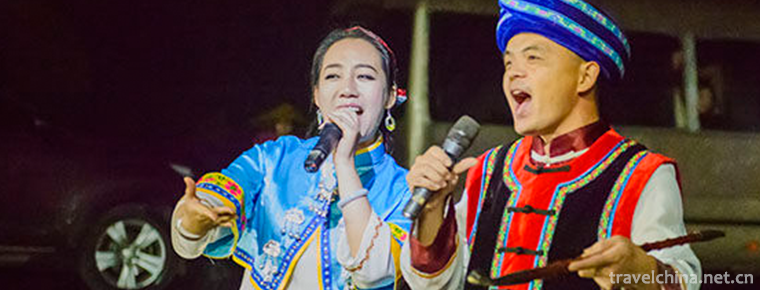
-
yangshuo west street
West Street is nicknamed Foreigner's Street, located in Yangshuo County,.
Views: 139 Time 2018-10-12 -
Fulaishan Scenic Area
Fulaishan Scenic Spot, located about 8 kilometers west of Juxian County Town, is a national AAAA-level tourist scenic spot, provincial scenic spot, provincial geological heritage nature reserve, and i.
Views: 142 Time 2019-01-12 -
Lushan Karst Cave Group Scenic Area
Yiyuan Karst Cave Group is located in Nanlushan Town, 7 kilometers northwest of Yiyuan County. It has been proved that there are more than 100 caves in the area of 5 square kilometers around the ape-m.
Views: 164 Time 2019-02-06 -
Bao en Temple Pingwu
Pingwu Baoen Temple is located in Pingwu County, Sichuan Province. It is 184 kilometers away from Mianyang City and 300 kilometers away from Chengdu. Located in the northeast corner of the county town.
Views: 144 Time 2019-02-07 -
Kazakh Dongbra Art
Winter Bula's strength and speed vary widely, especially for fast music. Dongbula is suitable for men and women. The basic method of playing is playing and picking. .
Views: 188 Time 2019-05-02 -
Miao Lusheng Dance
Lusheng dance, also known as "stepping on Lusheng" and "stepping on the singing hall", is named for its accompaniment and self-boasting dance. It spreads in the Miao, Dong, Buyi, S.
Views: 157 Time 2019-06-05 -
Pingyao Pushing Lacquerware Decoration Techniques
Pingyao polishing lacquerware decoration technology originated in Pingyao County, central Shanxi Province, and spread to the vast northern region. Lacquerware made with this technique has been well kn.
Views: 142 Time 2019-06-09 -
Diagnosis of Traditional Chinese Medicine
Diagnosis of traditional Chinese medicine, one of the traditional Chinese medicine, is declared by the Chinese Academy of Traditional Chinese Medicine, one of the national intangible cultural heritage.
Views: 325 Time 2019-08-10 -
Aba Teachers University
Aba Teachers College, formerly Aba Teachers College, is a full-time general college approved by the State Council in December 1978. In 1993, it was renamed Aba Teachers College. The school was origina.
Views: 228 Time 2019-08-31 -
Bing Xin
Bing Xin (October 5, 1900 - February 28, 1999), female, formerly known as Xie Wanying, Changle, Fujian province (now Changle District, Fuzhou), China Association for democracy promotion ( China Associ.
Views: 159 Time 2019-09-06 -
China Youth University of Political Studies
China Youth University for Political Science (China Youth University of Political Studies) is located in Beijing. It is the state-level "Communist Youth League Central Research Center for the the.
Views: 94 Time 2019-12-25 -
Guangan hydrology
There are two main streams of Jialing River and Qujiang River in Guang'an City. There are more than 700 large and small rivers and streams. There are 35 primary and secondary tributaries with a drainage area of more than 50 square kilometers. Among the.
Views: 326 Time 2020-12-19

